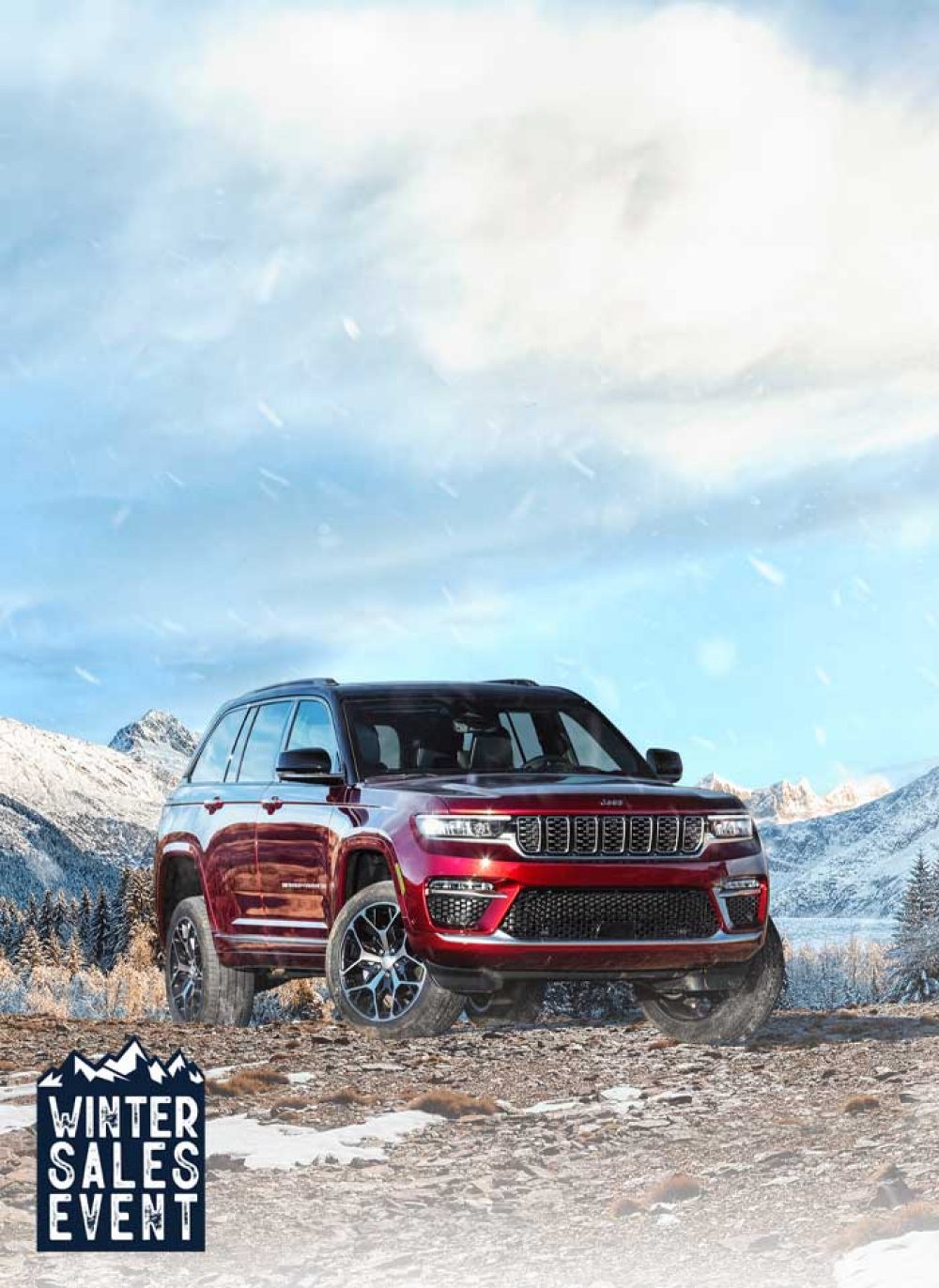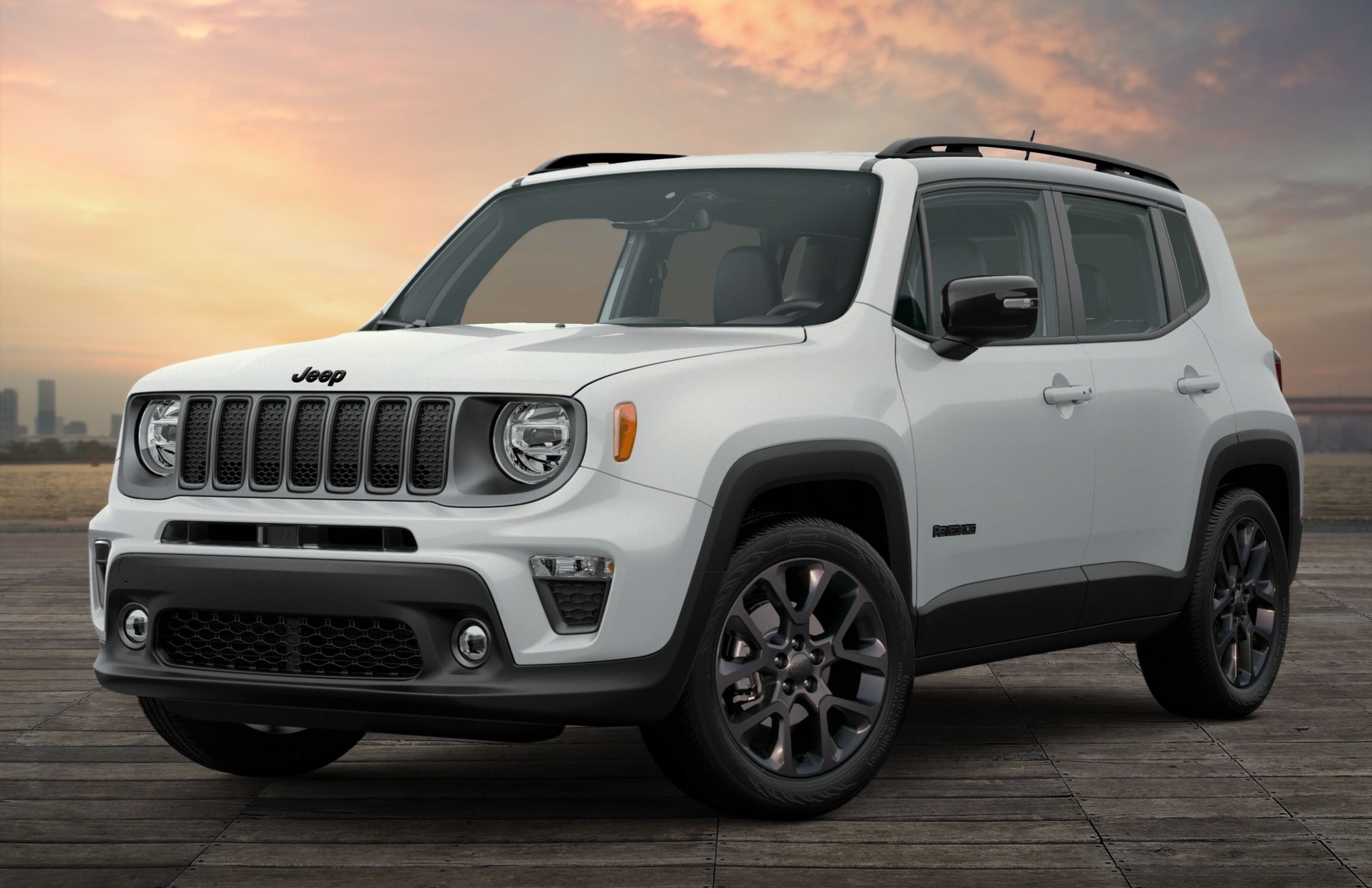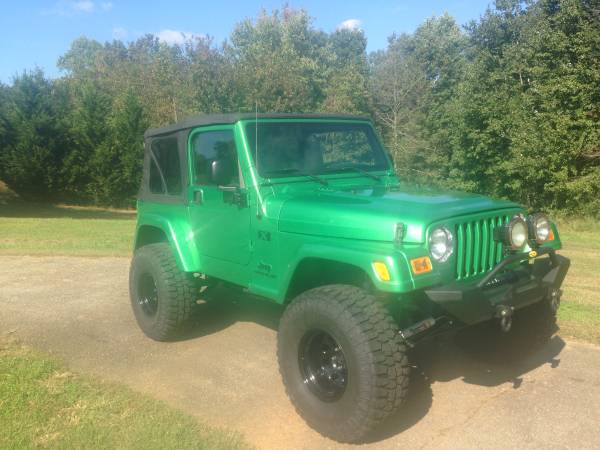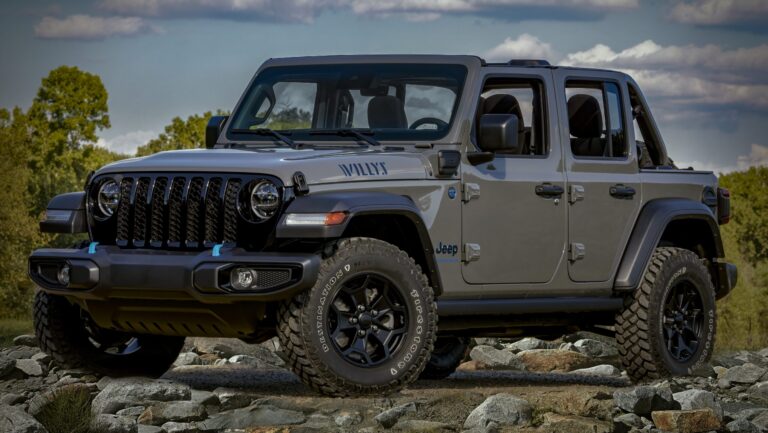Jeep CJ-10 For Sale: A Comprehensive Buyer’s Guide to Owning a Rare Legend
Jeep CJ-10 For Sale: A Comprehensive Buyer’s Guide to Owning a Rare Legend jeeps.truckstrend.com
The world of vintage Jeeps is vast and varied, filled with iconic models that have carved their place in automotive history. Among these, certain vehicles stand out not just for their rugged capability but for their unique story and extreme rarity. The Jeep CJ-10 is one such legend. Often a mystery even to seasoned Jeep enthusiasts, the CJ-10 represents a fascinating chapter in the brand’s global legacy. For those in the know, finding a Jeep CJ-10 for sale isn’t just about acquiring a vehicle; it’s about unearthing a piece of automotive archaeology, a distinctive blend of utility, history, and a truly unique aesthetic.
This comprehensive guide aims to demystify the process of finding and purchasing a Jeep CJ-10. We’ll delve into its history, what makes it special, critical inspection points, where to look, pricing considerations, and practical advice to help you navigate the journey of owning this exceptionally rare and intriguing Jeep pickup.
Jeep CJ-10 For Sale: A Comprehensive Buyer’s Guide to Owning a Rare Legend
Understanding the Jeep CJ-10: A Brief History and Unique Appeal
Before embarking on the hunt for a Jeep CJ-10 for sale, it’s crucial to understand what you’re looking at. Unlike its more common siblings, the CJ-7 or CJ-8 Scrambler, the CJ-10 was never intended for the North American civilian market. Instead, it was primarily built for export, with a significant number going to Australia for military and agricultural use. Production was limited, spanning roughly from 1981 to 1985.
Key Distinguishing Features of the CJ-10:
- Distinctive Front End: The most obvious visual cue is its unique front fascia. Unlike other CJs with their iconic round headlights, the CJ-10 sports rectangular headlights integrated into a wider, more utilitarian grille. This design was borrowed from the contemporary J-series pickup trucks, giving it a more truck-like appearance.
- Pickup Bed: While the CJ-8 Scrambler also had a pickup bed, the CJ-10’s bed was often more robust, designed for heavier utility, and sometimes featured different taillight placements.
- Engine Options: A defining characteristic for many CJ-10s was their diesel powerplants. Common engines included the Nissan SD33 3.3L inline-six diesel (naturally aspirated or turbocharged, similar to what was found in some international Scout IIs) and the Perkins 4.236 3.8L four-cylinder diesel. Some rare petrol versions also existed, often with AMC 2.5L or 4.2L inline-six engines.
- Heavy-Duty Components: Reflecting its intended workhorse role, the CJ-10 often came equipped with more robust axles (e.g., Dana 44 rear) and heavy-duty suspension components.
- Chassis Integration: It utilized a chassis that blended elements of the CJ and the J-series pickup, resulting in a wheelbase similar to the CJ-8 Scrambler but with a distinctly different character.

The rarity of the CJ-10, coupled with its unusual blend of CJ and J-series DNA, makes it a highly sought-after vehicle for collectors and enthusiasts who appreciate its utilitarian charm and unique place in Jeep history.

What to Look For When Buying a Jeep CJ-10 For Sale
Acquiring a vintage vehicle, especially one as rare as a CJ-10, requires a meticulous inspection process. These vehicles are decades old, and their condition can vary wildly from a rusted-out shell to a beautifully restored specimen.
1. Rust and Body Integrity: The Primary Concern
- Frame: Inspect the entire frame for rust, especially near spring hangers, body mounts, and crossmembers. Pay attention to any signs of previous repairs or patches, as these can hide underlying issues.
- Body Panels: Check the floorboards, rocker panels, wheel wells, and the pickup bed itself. The bed, being a utility component, often saw heavy use and can be prone to dents, rust, and fatigue.
- Cab and Windshield Frame: Rust around the windshield frame, door hinges, and cab mounts is common.
- Fuel Tank Skid Plate Area: This area is often overlooked but can harbor significant rust.
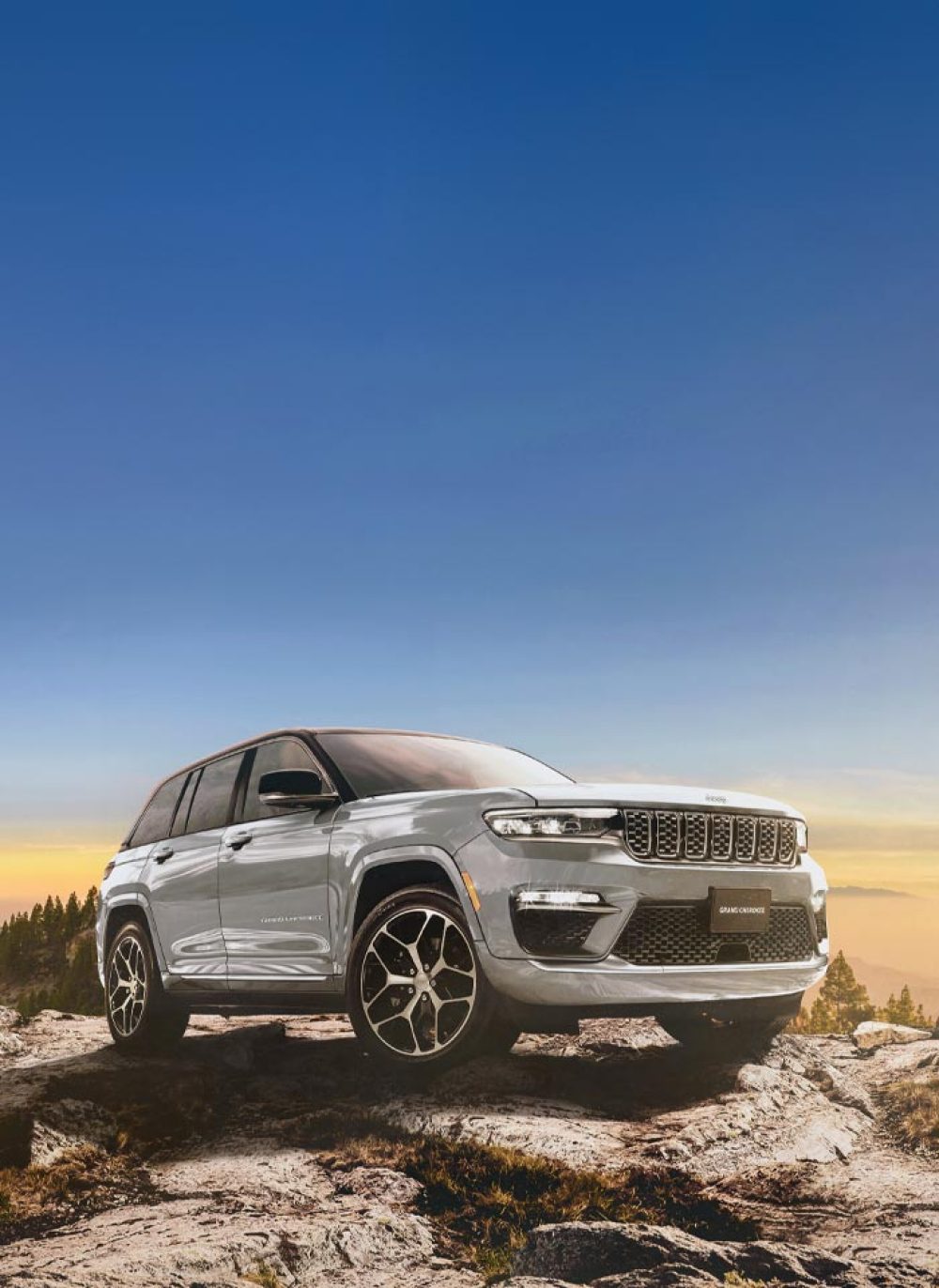
2. Engine and Drivetrain: The Heart of the Beast
- Engine Type and Condition: Identify the engine. Is it the original Nissan SD33 or Perkins diesel, or has it been swapped? For diesels, look for excessive smoke (blue for oil, black for fuel, white for coolant/unburnt fuel), unusual noises, and oil leaks. Check the glow plugs for proper function. If it’s a petrol engine, check for typical issues like rough idling, misfires, and leaks.
- Transmission: Most CJ-10s came with manual transmissions (like the T-176, T-177, or T-18) or, less commonly, automatic (TF-999). Test all gears, including reverse. Listen for grinding, popping out of gear, or excessive play in the shifter.
- Transfer Case: Typically a Dana 300 or NP208. Engage 2WD, 4-High, and 4-Low. Ensure it shifts smoothly and locks correctly.
- Axles and Differentials: Check for leaks around the differential covers and axle seals. Listen for any whining or clunking noises during a test drive, which could indicate worn gears or bearings. The Dana 44 rear axle is a strong point.
3. Suspension and Steering: On-Road and Off-Road Performance
- Leaf Springs: Inspect for sagging, broken leaves, or worn bushings.
- Shocks: Check for leaks or excessive bounce.
- Steering Components: Look for play in the steering wheel. Inspect the steering box for leaks, tie rods, drag link, and ball joints for wear. Worn components can lead to vague steering and safety issues.
4. Electrical System and Interior: Functionality and Comfort
- Wiring: Vintage Jeeps can suffer from hacked or deteriorating wiring. Check all lights (headlights, taillights, turn signals), gauges, and accessories for proper function.
- Interior: Assess the condition of seats, dashboard, and instrumentation. Many CJ-10s were work vehicles, so expect wear and tear. Originality of interior components can add value.
5. Documentation and Legal and Historical Proof
- Ensure the vehicle has a clear title in the seller’s name. Verify the VIN matches the title and the vehicle itself.
- Import Papers: If the vehicle was imported from Australia or another country, ensure all necessary import documentation is present and legally compliant for your region.
- Service Records: Any available maintenance or repair records can provide valuable insight into the vehicle’s history and care.
Where to Find a Jeep CJ-10 For Sale
Given their rarity, finding a Jeep CJ-10 for sale requires patience and a broad search strategy.
- Online Marketplaces: Websites like eBay Motors, Craigslist (though less likely for such a niche vehicle), and dedicated classic car/truck classifieds (e.g., Hemmings, Bring a Trailer, ClassicCars.com) are good starting points.
- Jeep Forums and Enthusiast Groups: Dedicated forums (e.g., JeepForum.com, IH8MUD.com for Nissan SD33 discussions, specific CJ forums) and Facebook groups focused on vintage Jeeps or classic 4x4s are excellent resources. Members often list vehicles for sale or can provide leads.
- Specialty Classic Car Dealerships: Some dealerships specialize in vintage 4x4s and might occasionally have a CJ-10 in stock, though expect a premium price.
- Auctions: Online and live auctions (e.g., Mecum, Barrett-Jackson, or local estate auctions) can sometimes turn up rare finds.
- Word of Mouth: Networking within the classic Jeep community can yield unexpected leads.
Challenge: Be prepared to travel, potentially across states or even internationally, to inspect and purchase a suitable CJ-10. Shipping costs for a vehicle can be significant.
Pricing a Jeep CJ-10: Factors Influencing Value
The price of a Jeep CJ-10 for sale can vary dramatically based on several factors. Its rarity inherently drives up its value compared to more common CJs, but condition is king.
| Condition Category | Estimated Price Range (USD) | Key Characteristics |
| :—————– | :————————– | :———————————————————————————————————————————————————————————————————————————————————————————————————————————————————————————————————————————————————————————————————————————————————————————————————————————————————————————————————————————————————————————————————————————————————————————————————————————————————————————————————————————————————————————————————————————————————————————————————————————————————————————————————————————————————————————————————————————————————————————————————————————————————————————————————————————————————————————————————————————————————————————————————————————————————————————————————————————————————————————————————————————————————————————————————————————————————————————————————————————————————————————————————————————————————————————————————————————————————————————————————————————————————————————————————————————————————————————————————————————————————————————————————————————————————————————————————————————————————————————————————————————————————————————————————————————————————————————————————————————————————————————————————————————————————————————————————————————————————————————————————————————————————————————————————————————————————————————————————————————————————————————————————————————————————————————————————————————————————————————————————————————————————————————————————————————————————————————————————————————————————————————————————————————————————————————————————————————————————————————————————————————————————————————————————————————————————————————————————————————————————————————————————————————————————————————————————————————————————————————————————————————————————————————————————————————————————————————————————————————————————————————————————————————————————————————————————————————————————————————————————————————————————————————————————————————————————————————————————————————————————————————————————————————————————————————————————————————————————————————————————————————————————————————————————————————————————————————————————————————————————————————————————————————————————————————————————————————————————————————————————————————————————————————————————————————————————————————————————————————————————————————————————————————————————————————————————————————————————————————————————————————————————————————————————————————————————————————————————————————————————————————————————————————————————————————————————————————————————————————————————————————————————————————————————————————————————————————————————————————————————————————————————————————————————————————————————————————————————————————————————————————————————————————————————————————————————————————————————————————————————————————————————————————————————————————————————————————————————————————————————————————————————————————————————————————————————————————————————————————————————————————————————————————————————————————————————————————————————————————————————————————————————————————————————————————————————————————————————————————————————————————————————————————————————————————————————————————————————————————————————————————————————————————————————————————————————————————————————————————————————————————————————————————————————————————————————————————————————————————————————————————————————————————————————————————————————————————————————————————————————————————————————————————————————————————————————————————————————————————————————————————————————————————————————————————————————————————————————————————————————————————————————————————————————————————————————————————————————————————————————————————————————————————————————————————————————————————————————————————————————————————————————————————————————————————————————————————————————————————————————————————————————————————————————————————————————————————————————————————————————————————————————————————————————————————————————————————————————————————————————————————————————————————————————————————————————————————————————————————————————————————————————————————————————————————————————————————————————————————————————————————————————————————————————————————————————————————————————————————————————————————————————————————————————————————————————————————————————————————————————————————————————————————————————————————————————————————————————————————————————————————————————————————————————————————————————————————————————————————————————————————————————————————————————————————————————————————————————————————————————————————————————————————————————————————————————————————————————————————————————————————————————————————————————————————————————————————————————————————————————————————————————————————————————————————————————————————————————————————————————————————————————————————————————————————————————————————————————————————————————————————————————————————————————————————————————————————————————————————————————————————————————————————————————————————————————————————————————————————————————————————————————————————————————————————————————————————————————————————————————————————————————————————————————————————————————————————————————————————————————————————————————————————————————————————————————————————————————————————————————————————————————————————————————————————————————————————————————————————————————————————————————————————————————————————————————————————————————————————————————————————————————————————————————————————————————————————————————————————————————————————————————————————————————————————————————————————————————————————————————————————————————————————————————————————————————————————————————————————————————————————————————————————————————————————————————————————————————————————————————————————————————————————————————————————————————————————————————————————————————————————————————————————————————————————————————————————————————————————————————————————————————————————————————————————————————————————————————————————————————————————————————————————————————————————————————————————————————————————————————————————————————————————————————————————————————————————————————————————————————————————————————————————————————————————————————————————————————————————————————————————————————————————————————————————————————————————————————————————————————————————————————————————————————————————————————————————————————————————————————————————————————————————————————————————————————————————————————————————————————————————————————————————————————————————————————————————————————————————————————————————————————————————————————————————————————————————————————————————————————————————————————————————————————————————————————————————————————————————————————————————————————————————————————————————————————————————————————————————————————————————————————————————————————————————————————————————————————————————————————————————————————————————————————————————————————————————————————————————————————————————————————————————————————————————————————————————————————————————————————————————————————————————————————————————————————————————————————————————————————————————————————————————————————————————————————————————————————————————————————————————————————————————————————————————————————————————————————————————————————————————————————————————————————————————————————————————————————————————————————————————————————————————————————————————————————————————————————————————————————————————————————————————————————————————————————————————————————————————————————————————————————————————————————————————————————————————————————————————————————————————————————————————————————————————————————————————————————————————————————————————————————————————————————————————————————————————————————————————————————————————————————————————————————————————————————————————————————————————————————————————————————————————————————————————————————————————————————————————————————————————————————————————————————————————————————————————————————————————————————————————————————————————————————————————————————————————————————————————————————————————————————————————————————————————————————————————————————————————————————————————————————————————————————————————————————————————————————————————————————————————————————————————————————————————————————————————————————————————————————————————————————————————————————————————————————————————————————————————————————————————————————————————————————————————————————————————————————————————————————————————————————————————————————————————————————————————————————————————————————————————————————————————————————————————————————————————————————————————————————————————————————————————————————————————————————————————————————————————————————————————————————————————————————————————————————————————————————————————————————————————————————————————————————————————————————————————————————————————————————————————————————————————————————————————————————————————————————————————————————————————————————————————————————————————————————————————————————————————————————————————————————————————————————————————————————————————————————————————————————————————————————————————————————————————————————————————————————————————————————————————————————————————————————————————————————————————————————————————————————————————————————————————————————————————————————————————————————————————————————————————————————————————————————————————————————————————————————————————————————————————————————————————————————————————————————————————————————————————————————————————————————————————————————————————————————————————————————————————————————————————————————————————————————————————————————————————————————————————————————————————————————————————————————————————————————————————————————————————————————————————————————————————————————————————————————————————————————————————————————————————————————————————————————————————————————————————————————————————————————————————————————————————————————————————————————————————————————————————————————————————————————————————————————————————————————————————————————————————————————————————————————————————————————————————————————————————————————————————————————————————————————————————————————————————————————————————————————————————————————————————————————————————————————————————————————————————————————————————————————————————————————————————————————————————————————————————————————————————————————————————————————————————————————————————————————————————————————————————————————————————————————————————————————————————————————————————————————————————————————————————————————————————————————————————————————————————————————————————————————————————————————————————————————————————————————————————————————————————————————————————————————————————————————————————————————————————————————————————————————————————————————————————————————————————————————————————————————————————————————————————————————————————————————————————————————————————————————————————————————————————————————————————————————————————————————————————————————————————————————————————————————————————————————————————————————————————————————————————————————————————————————————————————————————————————————————————————————————————————————————————————————————————————————————————————————————————————————————————————————————————————————————————————————————————————————————————————————————————————————————————————————————————————————————————————————————————————————————————————————————————————————————————————————————————————————————————————————————————————————————————————————————————————————————————————————————————————————————————————————————————————————————————————————————————————————————————————————————————————————————————————————————————————————————————————————————————————————————————————————————————————————————————————————————————————————————————————————————————————————————————————————————————————————————————————————————————————————————————————————————————————————————————————————————————————————————————————————————————————————————————————————————————————————————————————————————————————————————————————————————————————————————————————————————————————————————————————————————————————————————————————————————————————————————————————————————————————————————————————————————————————————————————————————————————————————————————————————————————————————————————————————————————————————————————————————————————————————————————————————————————————————————————————————————————————————————————————————————————————————————————————————————————————————————————————————————————————————————————————————————————————————————————————————————————————————————————————————————————————————————————————————————————————————————————————————————————————————————————————————————————————————————————————————————————————————————————————————————————————————————————————————————————————————————————————————————————————————————————————————————————————————————————————————————————————————————————————————————————————————————————————————————————————————————————————————————————————————————————————————————————————————————————————————————————————————————————————————————————————————————————————————————————————————————————————————————————————————————————————————————————————————————————————————————————————————————————————————————————————————————————————————————————————————————————————————————————————————————————————————————————————————————————————————————————————————————————————————————————————————————————————————————————————————————————————————————————————————————————————————————————————————————————————————————————————————————————————————————————————————————————————————————————————————————————————————————————————————————————————————————————————————————————————————————————————————————————————————————————————————————————————————————————————————————————————————————————————————————————————————————————————————————————————————————————————————————————————————————————————————————————————————————————————————————————————————————————————————————————————————————————————————————————————————————————————————————————————————————————————————————————————————————————————————————————————————————————————————————————————————————————————————————————————————————————————————————————————————————————————————————————————————————————————————————————————————————————————————————————————————————————————————————————————————————————————————————————————————————————————————————————————————————————————————————————————————————————————————————————————————————————————————————————————————————————————————————————————————————————————————————————————————————————————————————————————————————————————————————————————————————————————————————————————————————————————————————————————————————————————————————————————————————————————————————————————————————————————————————————————————————————————————————————————————————————————————————————————————————————————————————————————————————————————————————————————————————————————————————————————————————————————————————————————————————————————————————————————————————————————————————————————————————————————————————————————————————————————————————————————————————————————————————————————————————————————————————————————————————————————————————————————————————————————————————————————————————————————————————————————————————————————————————————————————————————————————————————————————————————————————————————————————————————————————————————————————————————————————————————————————————————————————————————————————————————————————————————————————————————————————————————————————————————————————————————————————————————————————————————————————————————————————————————————————————————————————————————————————————————————————————————————————————————————————————————————————————————————————————————————————————————————————————————————————————————————————————————————————————————————————————————————————————————————————————————————————————————————————————————————————————————————————————————————————————————————————————————————————————————————————————————————————————————————————————————————————————————————————————————————————————————————————————————————————————————————————————————————————————————————————————————————————————————————————————————————————————————————————————————————————————————–The Enduring Allure of the Jeep CJ-10: Your Comprehensive Guide to Finding and Owning a Rare Legend
In the vast and varied tapestry of Jeep’s storied history, certain models emerge not just as vehicles, but as fascinating artifacts of a bygone era, cherished for their distinctiveness and scarcity. The Jeep CJ-10 For Sale is one such legendary anomaly. Often a whispered secret even among ardent Jeep aficionados, the CJ-10 represents a captivating chapter in the brand’s global expansion, a unique blend of rugged utility and an unmistakable, heavy-duty aesthetic. For the discerning collector or the enthusiast yearning for something truly different, encountering a Jeep CJ-10 for sale isn’t merely a transaction; it’s an opportunity to unearth a piece of automotive archaeology, a testament to Jeep’s adaptability and enduring design.
This comprehensive guide is meticulously crafted to illuminate the path for anyone embarking on the quest for a Jeep CJ-10. We will delve into its intriguing origins, spotlight its defining characteristics, provide an exhaustive checklist for inspection, outline the most effective avenues for discovery, discuss realistic pricing parameters, and offer invaluable practical advice to ensure your journey to owning this exceptionally rare and intriguing Jeep pickup is both successful and rewarding.
Unearthing the CJ-10: History, Design, and Its Unique Place
The Jeep CJ-10 stands apart from its more ubiquitous siblings, such as the CJ-7 or the CJ-8 Scrambler, primarily because it was never conceived for the North American civilian market. Instead, this robust pickup was specifically engineered for export, with a significant proportion destined for Australia, where it served dutifully in military and agricultural roles. Its production run was notably brief, roughly spanning from 1981 to 1985, contributing significantly to its current rarity.
Distinguishing Attributes That Define the CJ-10:
- The Signature Front Fascia: The most immediate visual identifier of a CJ-10 is its front end. Breaking from the iconic round headlights synonymous with most CJs, the CJ-10 sports prominent rectangular headlights seamlessly integrated into a wider, more utilitarian grille. This design cue was cleverly borrowed from the contemporary J-series pickup trucks, imbuing the CJ-10 with a more formidable, truck-like visage.
- Purpose-Built Pickup Bed: While the CJ-8 Scrambler also featured a pickup bed, the CJ-10’s bed was often engineered for greater robustness, designed to withstand heavier utility demands. Variations in taillight placement and bed configurations can also be observed.
- Diverse Powertrain Options: A defining characteristic for many CJ-10s was their reliance on diesel power. Common choices included the durable Nissan SD33 3.3L inline-six diesel (available in naturally aspirated or turbocharged variants, echoing its use in some international Scout II models) and the Perkins 4.236 3.8L four-cylinder diesel. While less common, some petrol-powered versions were also produced, often equipped with AMC’s 2.5L or 4.2L inline-six engines.
- Reinforced Running Gear: In line with its design as a heavy-duty workhorse, the CJ-10 frequently came equipped with more robust axles (such as the venerable Dana 44 in the rear) and beefed-up suspension components, enhancing its load-carrying and off-road capabilities.
- Hybrid Chassis Architecture: The CJ-10’s underpinnings ingeniously combined elements from both the CJ and the J-series pickup chassis. This resulted in a wheelbase comparable to the CJ-8 Scrambler but with a distinctly different structural integrity and character, optimized for its intended utility.
The inherent rarity of the CJ-10, combined with its intriguing fusion of CJ ruggedness and J-series practicality, positions it as a highly coveted vehicle for collectors and enthusiasts. It appeals to those who appreciate its utilitarian charm, its unique design, and its significant, albeit niche, place in Jeep’s illustrious history.
The Prudent Buyer’s Checklist: What to Scrutinize When a Jeep CJ-10 is For Sale
Acquiring any vintage vehicle demands a rigorous inspection, and a rare specimen like the CJ-10 amplifies this necessity. These machines are often several decades old, meaning their condition can span the entire spectrum from a mere collection of rusted parts to a meticulously restored showpiece.
1. The Pervasive Threat of Rust: A Top Priority
- Frame Integrity: Conduct a thorough, top-to-bottom inspection of the entire frame. Pay particular attention to common rust traps such as spring hangers, body mounts, and crossmembers. Be wary of any evidence of previous repair work or patch panels, as these can often conceal deeper structural corrosion.
- Body Panels and Bed: Systematically check the floorboards, rocker panels, wheel wells, and the pickup bed itself. The bed, having served a utilitarian purpose, is particularly susceptible to dents, perforation from rust, and metal fatigue.
- Cab and Windshield Frame: Areas around the windshield frame, door hinges, and cab mounts are notorious for accumulating moisture and consequently, rust.
- Fuel Tank and Skid Plate Area: This critical area is frequently overlooked but can harbor extensive corrosion due to road debris and moisture accumulation.
2. Power and Propulsion: The Heart of the Beast
- Engine Identification and Health: Confirm the engine type. Is it the original Nissan SD33 or Perkins diesel, or has a swap been performed? For diesel engines, observe exhaust for excessive smoke (blue for oil, black for unburnt fuel, white for coolant or incomplete combustion), listen for unusual mechanical noises, and inspect for oil leaks. Verify the proper operation of glow plugs. If it’s a petrol engine, check for typical issues like erratic idling, misfires, and fluid leaks.
- Transmission Performance: Most CJ-10s were equipped with robust manual transmissions (e.g., T-176, T-177, or T-18), with automatic (TF-999) being less common. During a test drive, cycle through all gears, including reverse. Listen for any grinding, clunking, or gears popping out of engagement. Assess for excessive shifter slop.
- Transfer Case Functionality: Typically a Dana 300 or NP208. Engage 2WD, 4-High, and 4-Low to ensure smooth engagement and proper locking in each mode.
- Axles and Differentials: Inspect for fluid leaks around differential covers and axle seals. During the test drive, listen for any whining or clunking sounds, which could indicate worn gears or bearings. The presence of a Dana 44 rear axle is a significant positive.
3. Ride and Handling: Suspension and Steering Dynamics
- Leaf Springs: Examine the leaf springs for signs of sagging, broken leaves, or worn bushings. These can severely impact ride quality and handling.
- Shock Absorbers: Look for any evidence of fluid leaks or excessive vehicle bounce, indicating worn shocks.
- Steering System: Check for excessive play in the steering wheel. Thoroughly inspect the steering box for leaks, and assess the condition of tie rods, drag link, and ball joints for wear. Worn components will lead to vague steering, making the vehicle challenging and potentially unsafe to drive.
4. Electrical System and Interior Comfort: Functionality and Practicality
- Wiring Integrity: Vintage Jeeps are notorious for compromised or amateurishly repaired wiring. Systematically test all lights (headlights, taillights, turn signals, brake lights), gauges, and any installed accessories for proper operation.
- Interior Condition: Evaluate the state of the seats, dashboard, and instrumentation. Given their typical working life, expect some degree of wear and tear. The originality of interior components can significantly enhance the vehicle’s value to collectors.
5. Essential Documentation: The Legal and Historical Footprint
- Clear Verify that the vehicle possesses a clear title, legally registered in the seller’s name. Crucially, cross-reference the Vehicle Identification Number (VIN) on the title with the VIN stamped on the vehicle itself.
- Import Documentation (If Applicable): If the CJ-10 was imported from Australia or any other country, ensure that all necessary import documentation is present and that the vehicle is legally compliant for registration in your region.
- Service History: Any available maintenance or repair records can offer invaluable insights into the vehicle’s past care and potential future needs.
The Hunt: Where to Discover a Jeep CJ-10 For Sale
Given their extreme rarity, locating a Jeep CJ-10 for sale demands patience, persistence, and a multi-pronged search strategy.
- Specialized Online Marketplaces: Begin your search on platforms like eBay Motors, Bring a Trailer, and ClassicCars.com. While less common, also keep an eye on broader sites like Craigslist, though success here is more sporadic.
- Dedicated Jeep & 4×4 Forums and Social Groups: Niche forums (e.g., JeepForum.com, various classic 4×4 communities) and Facebook groups specifically dedicated to vintage Jeeps or international 4x4s are often treasure troves. Members frequently list vehicles for sale or can provide valuable leads and insights.
- Classic Car & Truck Dealerships (Specialty): A select few dealerships specialize in vintage 4x4s. While they might occasionally stock a CJ-10, expect a premium price reflective of their acquisition and preparation efforts.
- Auctions: Keep an eye on both online and live automotive auctions (e.g., Mecum Auctions, Barrett-Jackson, or even local estate sales). Rare vehicles like the CJ-10 can sometimes appear without much fanfare.
- Networking and Word of Mouth: Engage with the classic Jeep community. Attending shows, joining clubs, and simply discussing your search can unexpectedly lead you to a hidden gem.
Crucial Consideration:
